Thai boys and their football coach must learn to dive or ‘could be trapped inside cave for four months’
Twelve boys and their football coach who have been found alive in a cave in Thailand could be trapped there for at least four months, the army says.
It said that unless the boys, aged between 11 and 16, learn to dive, they will have to wait for floodwater in the cave to recede.
The boys and their 25-year-old coach were discovered on Monday night by two British divers on a small dry ledge after being missing for ten days.
They had entered the Thamg Luang cave network in Chiang Rai, northern Thailand, after playing a match on June 23.
The focus now turns to providing the boys with food and supplies – and getting them out.
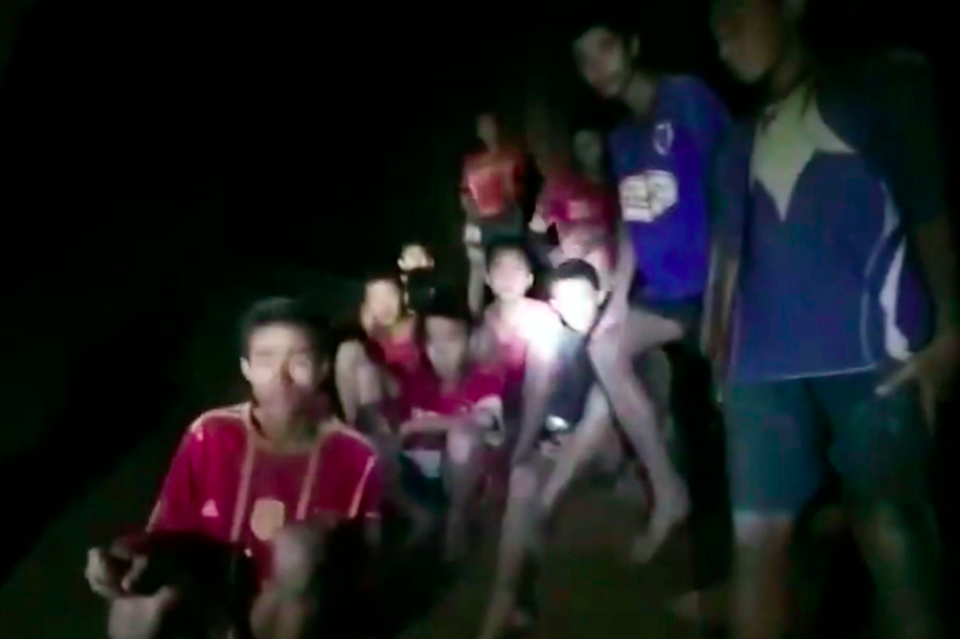
But with the cave full of water and heavy rain forecast in the coming days – and as none of the boys can swim or dive – that is no easy task.
“We will prepare to send additional food to be sustained for at least four months and train all 13 to dive while continuing to drain the water,” said Thai Navy Captain Anand Surawan.
Engineers have been pumping water out of the cave for a week, and by Tuesday were removing 10,000 litres an hour, lowering the water level inside by a centimetre per hour.
MOST POPULAR TODAY ON YAHOO
Alien ‘cigar’ asteroid showed strange ‘speed boost’ as it raced through solar system
DNA tests which prove people’s ancestry ‘are complete bunkum’ says expert
Theresa May angers her Brexit MPs amid claims she will try to keep the UK within the single market
Wildlife artist captures rare footage of tawny owl bathing in bright sunshine during heatwave
Here’s the scientific reason you never stop worrying about stuff
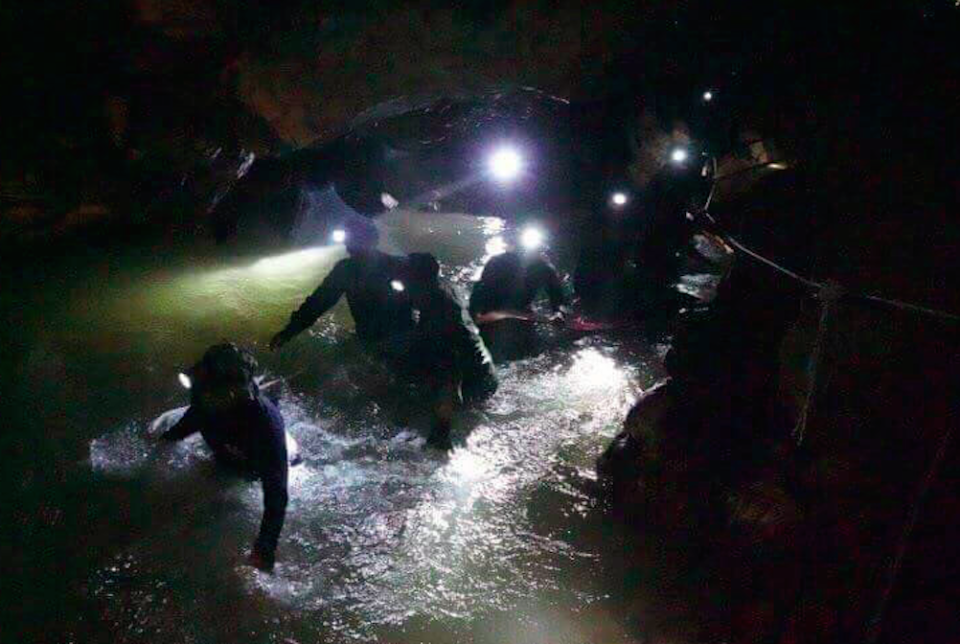
The boys are mostly in a stable condition and have received high-protein liquid food, officials said.
Video released by the Thai navy showed the boys in their football uniforms sitting on a dry area inside the cave above the water as a rescuer’s spotlight illuminated their faces.
Chiang Rai provincial governor Narongsak Osatanakorn said the health of the boys and coach were checked using a field assessment in which red is critical condition, yellow is serious and green is stable.

“We found that most of the boys are in green condition,” he said. “Maybe some of the boys have injuries or light injuries and would be categorised as yellow condition. But no one is in red condition.”
Family members of the missing hugged each other and cheered as they heard they had been found.
Aisha Wiboonrungrueng, the mother of 11-year-old Chanin Wiboonrungrueng, smiled and hugged her family as news of their discovery spread. She said she would cook her son a Thai omelette, his favourite food, when he returns home.
Divers found the group about 300m to 400m past a section of the cave on higher ground that was thought to be where they might have taken shelter.
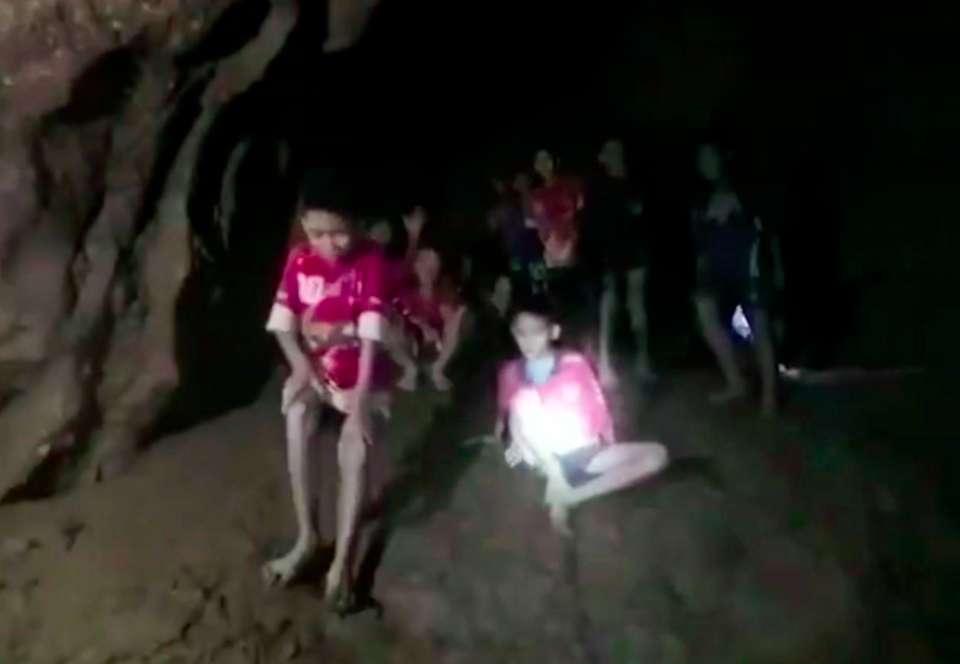
In the five-minute navy video, the boys are quiet as they sit on their haunches, legs bent in front of them.
“You are very strong,” one of the rescuers tells them.
Someone asks what day it is, and the rescuer responds, “Monday. Monday. You have been here – 10 days.”
One boy, noticing the camera and hearing unfamiliar words, says in Thai, “Oh, they want to take a picture; tell him we’re hungry. I haven’t had anything to eat.”
Then the boy breaks into simple English, saying, “Eat, eat, eat,” to which another voice responds in Thai that he already told that to the rescuer.
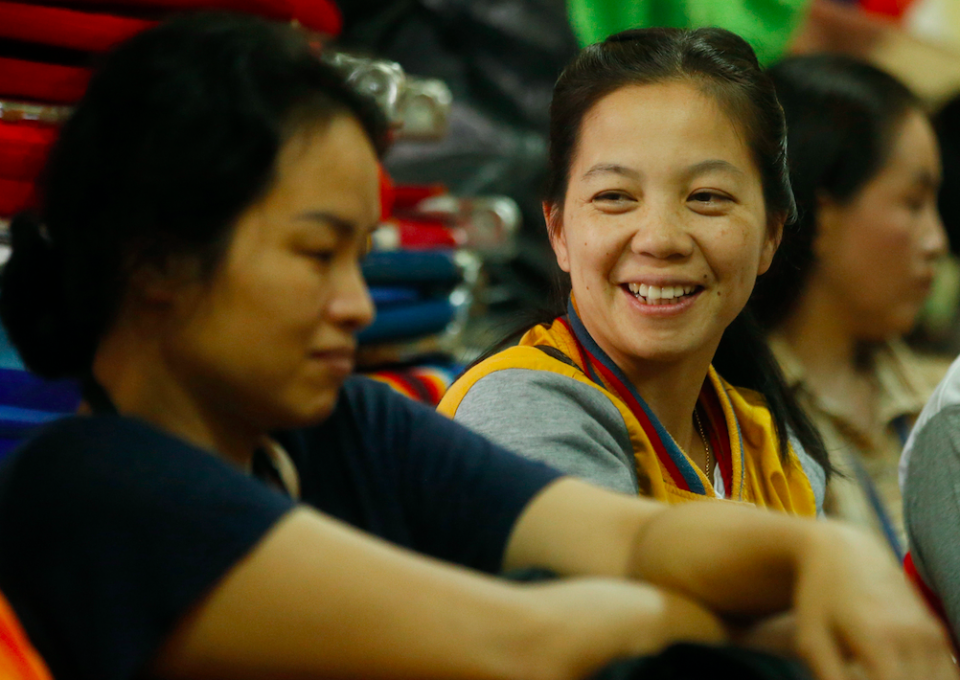
Mr Narongsak said on Tuesday that the missing were given high-protein liquid food, painkillers and antibiotics. He said doctors had advised giving the medicine as a preventative measure.
Anmar Mirza, a leading American cave rescue expert, said many challenges remain for the rescuers. He said the primary decision is whether to try to evacuate the boys and their coach or to supply them in place.
“Supplying them on site may face challenges depending on how difficult the dives are,” said Mr Mirza, coordinator of the US National Cave Rescue Commission.
“Trying to take non-divers through a cave is one of the most dangerous situations possible, even if the dives are relatively easy.
“That also begets the question: If the dives are difficult then supply will be difficult, but the risk of trying to dive them out is also exponentially greater.”
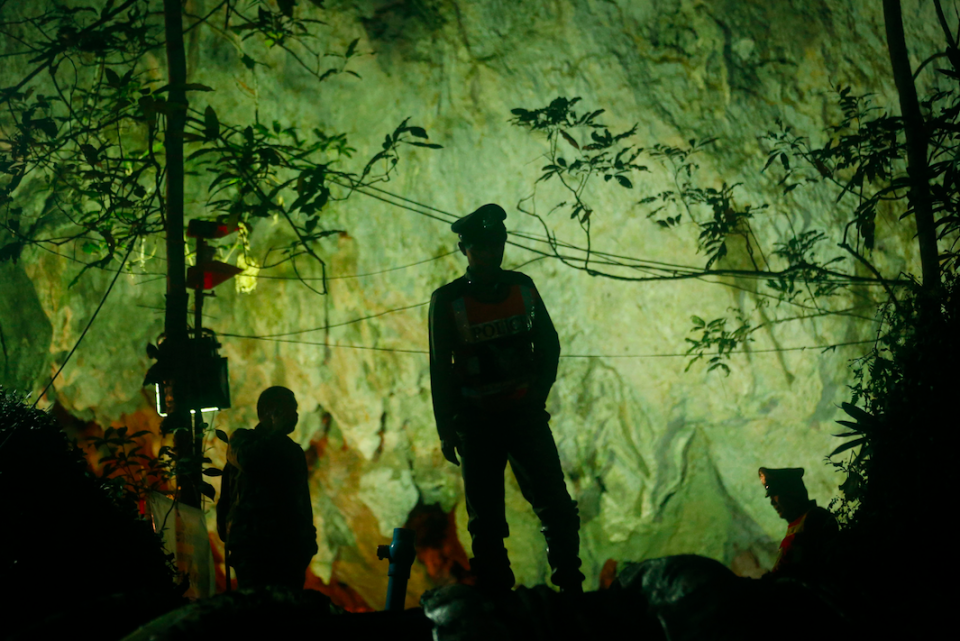
Mr Narongsak said officials had met and agreed on the need to “ensure 100 per cent safety for the boys when we bring them out.”
“We worked so hard to find them and we will not lose them,” he said.
Prime minister Prayuth Chan-ocha thanked the international experts and rescuers who helped locate the missing for their “tremendous efforts”.
“The Royal Thai Government and the Thai people are grateful for this support and cooperation, and we all wish the team a safe and speedy recovery,” Mr Prayuth’s office said in a statement.
The rescuers had been stymied repeatedly by rising water that forced divers to withdraw for safety reasons. When water levels fell on Sunday, the divers went forward with a more methodical approach, deploying a rope line and extra oxygen supplies along the way.
Teams have also been working to pump water out of the cave and divert groundwater, while other rescuers focused on exploring shafts above ground that might lead into the cave. Several fissures were found and teams have explored some, though none led to the missing group.
Experts in cave rescues from around the world had gathered at the site. An official Australian group has followed a US military team, British cave experts, Chinese lifesaving responders and several other volunteer groups from various countries.
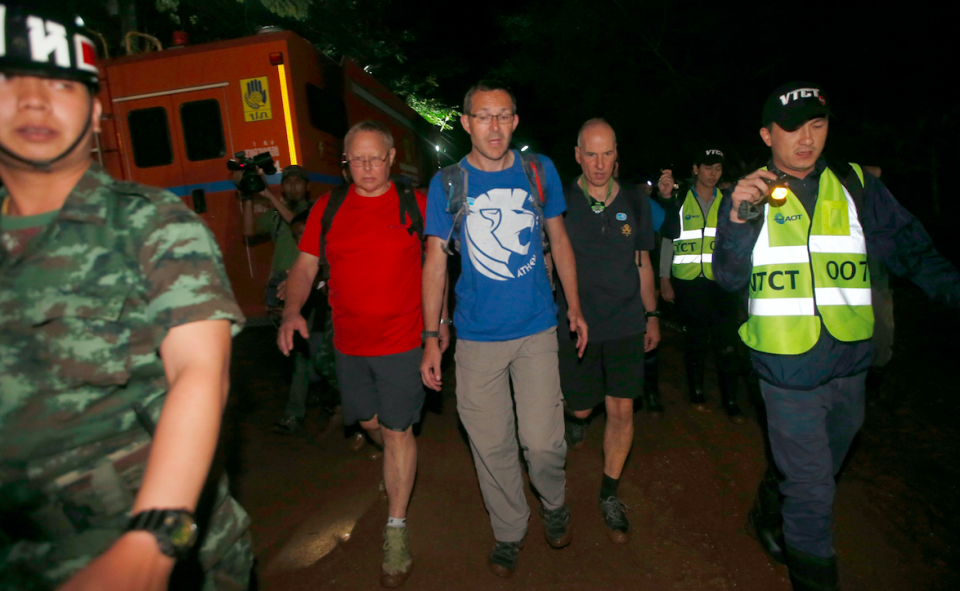
British divers Rick Stanton and John Volanthen were the first rescuers to reach the group.
Mr Stanton and Mr Volanthen, along with a third Briton, Robert Harper, joined the search operation after the British Cave Rescue Council (BCRC) was contacted by Thai authorities seeking expert help.
BCRC vice chairman Bill Whitehouse described how celebrations on Monday that the group had been found quickly turned to the challenge ahead.
“It was euphoria for a moment and then you draw back and think ‘what do we do’ – it’s not going to be easy to get 13 people out of a flooded cave,” he said.
“There’s space to make your way through, but it is 50/50 underwater over 1.5km (0.9mi). That’s still a lot of diving and it’s possible it will need a lot of equipment. The questions is how much time until the water goes up again.”
WHAT ARE THE RESCUE OPTIONS?
1. Diving
The group could be taught to swim through the passages using scuba equipment. But with almost a mile of tunnels, the task is not one suited to beginners. There is also the problem of rising water levels.
Search efforts were hampered last week after heavy rain rushed into the cave network, raising water levels and creating strong currents that made diving more or less impossible. The dives into the cave so far have already been a challenge.
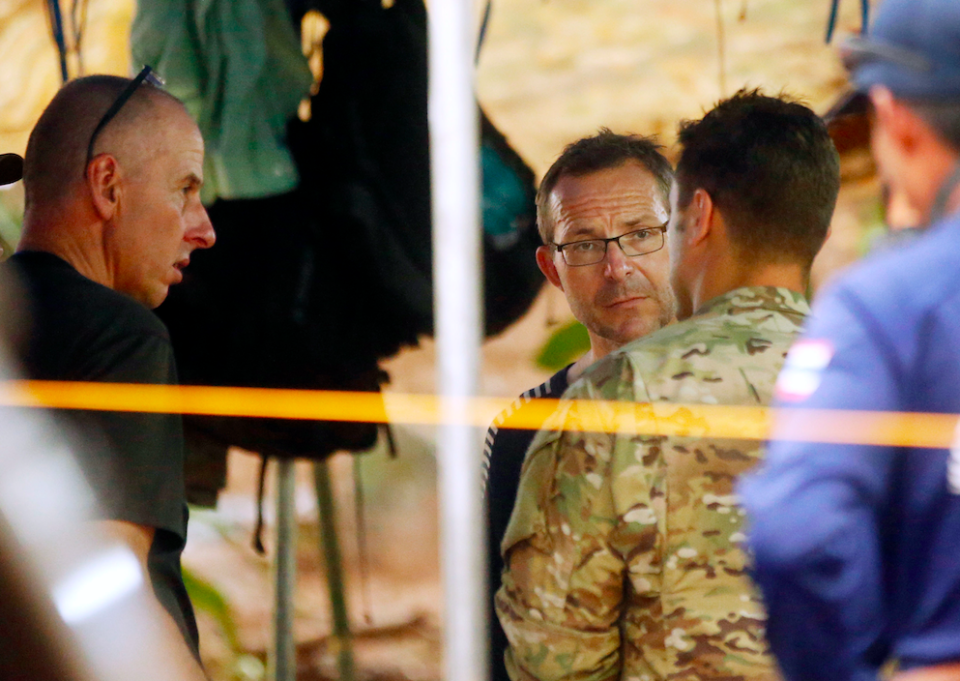
Bill Whitehouse, vice-chairman of the British Cave Rescue Council, told BBC Breakfast the operation to free the group is “a real brainteaser”. He said aside from teaching the group to dive, another option is to get divers to bring them out, but said he does not know if that is realistically possible.
2. Wait and re-supply
Rescuers could wait for the water level to drop, which some officials are reported to fear could take months.
Experts have said it could be safer to supply them where they are for now, but this could mean a long wait as the country’s rainy season typically lasts into October.
Mr Whitehouse said one of the positives is that air and water temperatures in Thailand are a lot warmer, pointing out that hypothermia would probably have set in by now if this happened in the UK.
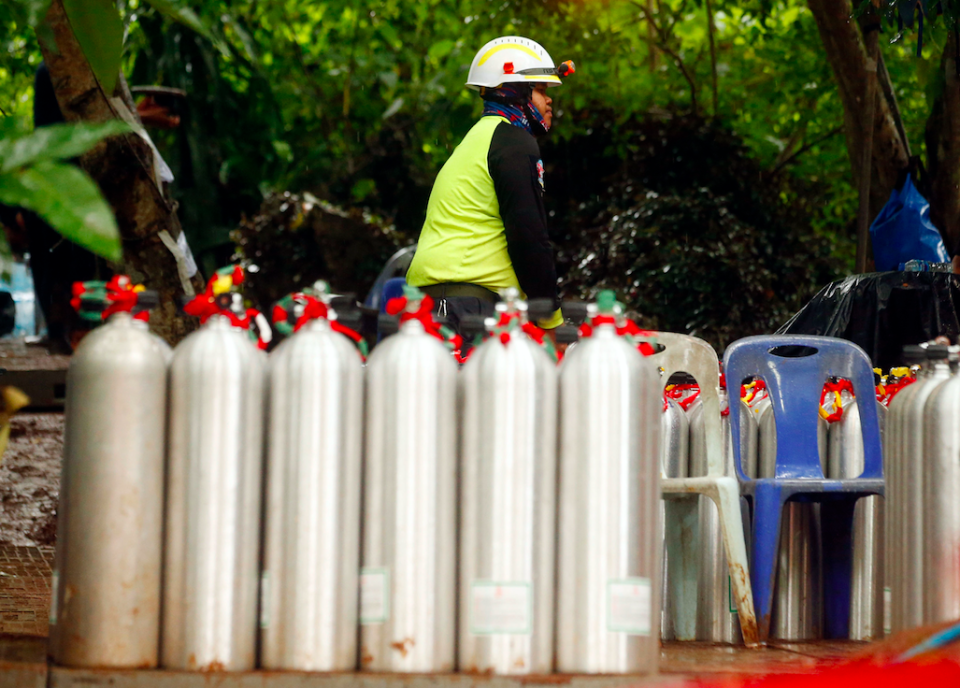
But with more monsoon rains on the way, potentially causing water levels to rise, supplying the group and attempting to extract them could be complicated.
3. Drill and airlift
Drilling into the chamber and airlifting the group out is another option, but this sort of extraction is thought to be a dangerous one.
Rescuers have searched for other possible entrances and drilling equipment has been sent, but creating a shaft large enough for the group to be extracted would be a difficult task.
The cave stretches under a mountainside for up to six miles and the rocky ground varies in elevation throughout. It is estimated that the boys are around half a mile below the surface.

 Yahoo News
Yahoo News 

